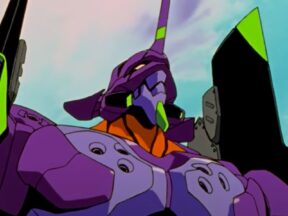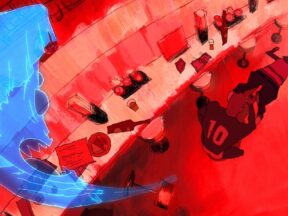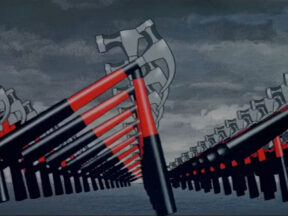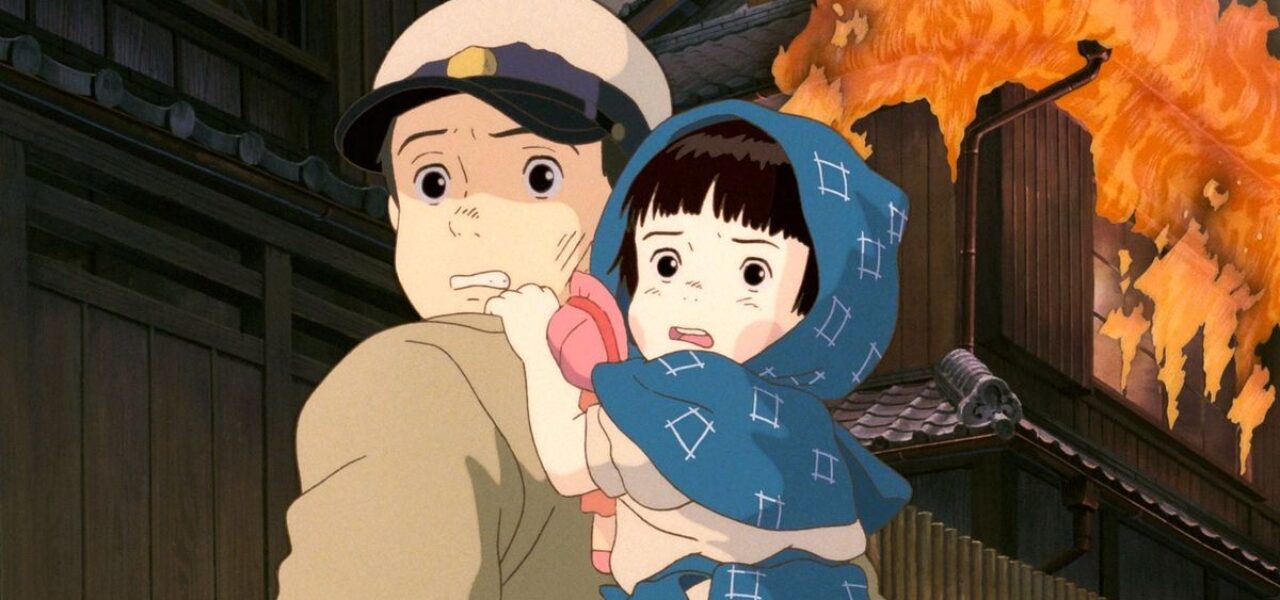
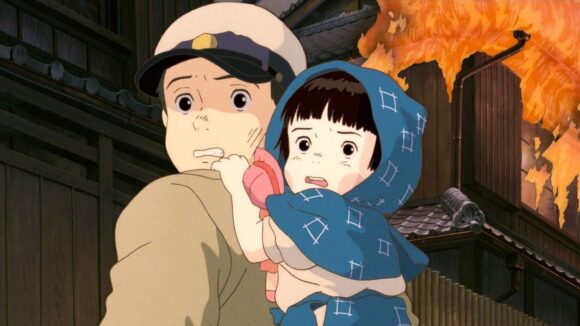
The Animation That Changed Me: Céline Desrumaux on ‘Grave Of The Fireflies’
For this week’s edition of The Animation That Changed Me, a series in which leading artists discuss one work of animation that deeply influenced them, Céline Desrumaux takes us back to wartime Japan.
Desrumaux is best known as a production designer, a title she held on Glen Keane’s Over the Moon and Mark Osborne’s The Little Prince (both of which are on Netflix), as well as Google’s vr short Age of Sail, for which she won an Emmy and an Annie. She has also worked as a visual development artist on Hotel Transylvania 3 and a texture artist on Harry Potter and the Deathly Hallows: Part 1, and has directed two shorts: Countdown and Yankee Gal.
Her choice is Grave of the Fireflies (1988), Studio Ghibli’s sombre masterpiece about two Japanese siblings fending for survival in the dying days of World War II. The film is based on a semi-autobiographical novella by Akiyuki Nosaka; director Isao Takahata also drew on his own memories of the war when making it. Below, Desrumaux explains why she chose the film:
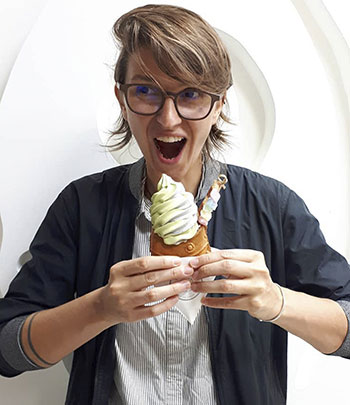
Céline Desrumaux: When I was 18 years old in France, dvds of Japanese animated movies were not really a thing yet, and it was still pretty difficult to watch foreign animation (outside Disney movies). One night, a cable tv channel broadcast Grave of the Fireflies. I had no idea what this film was about — I think the synopsis in the tv magazine was something like: “In Japan, a brother and his sister, set against the backdrop of World War II.” Which left it pretty open …
I recorded it on VHS and watched it the following weekend with my mom. At the end of the movie, we were two puddles of tears. This movie caught me by surprise. At that time, I never imagined an animated movie could be that powerful. It was not a movie about the war itself but more about the consequences of it (those are always tricky subjects). The movie is filled with poetry, nature, and deep characters.
Animation really takes this story to another level than what live action would have done (I’m pretty sure we would have been lost in explosions, effects, blood, and action somehow). This movie was the first movie that made me cry; I was not easy to move to tears. As you get older, you notice more and more subtleties in it (in the animation, the actions, or the ideas behind each scene).
I think the design choices are really smart for the type of story the director wanted to tell. You couldn’t have something too cartoonish (that would pull you away from the emotions) or too realistic (that would drag you into the realism of the event) for this story. It has the right balance between semi-realistic and stylization.
The backgrounds are very detailed when needed but also very muted most of the time (which evokes the bombed-out landscapes so well). Lighting is not a big part of the art direction, but the characters are always integrated into the environment. Every mid-tone is well balanced to give the right atmosphere. It feels like the art direction is completely committed to the story, the era, and the genre.
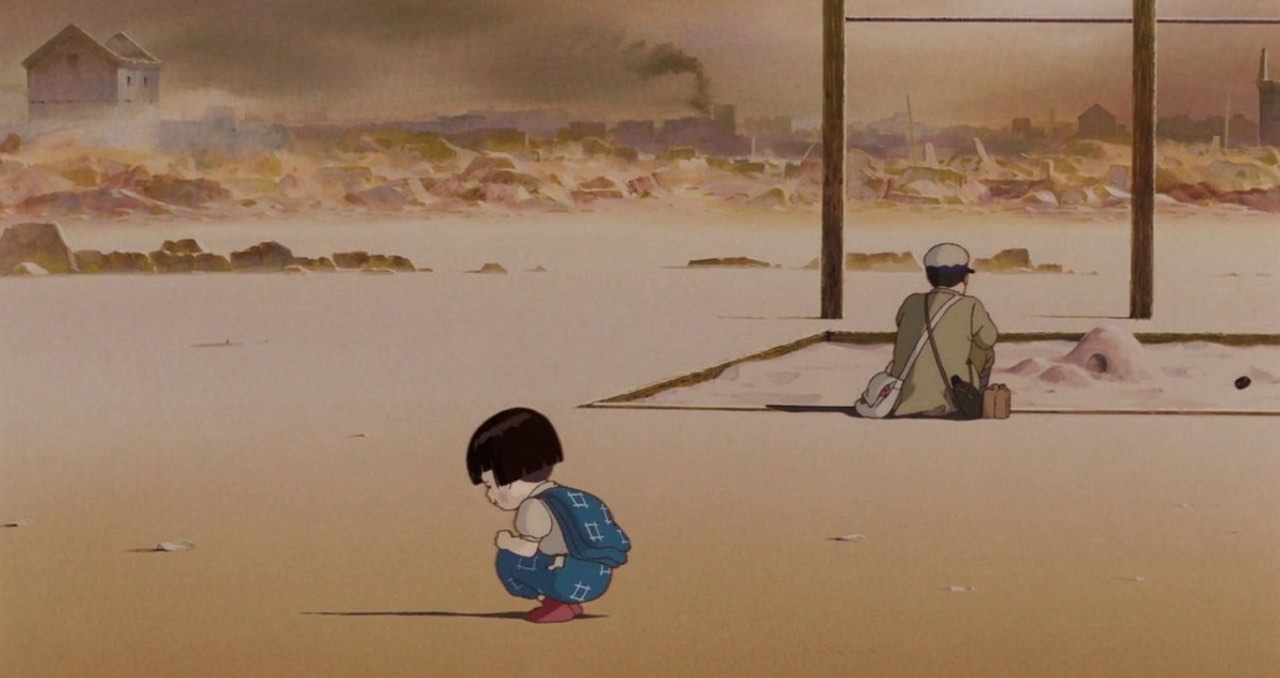
For professional work, I have never consciously drawn inspiration from Grave of the Fireflies, mostly because my professional work is stylistically and subject-wise so far away from it. Also, I rarely take animation as inspiration for my work in animation. I like to start from the source: my own experiences in situations that are similar to the protagonist’s, as well as photographs, travels, theater, dance shows, concerts, even books.
If I was working on a historic piece that was set in Japan or World War II, I would probably watch Grave of the Fireflies as reference. Because the architecture, buildings, clothes, everything was researched and thought through. I think it’s a fantastic testimony.
I developed a project that was happening during World War II. Without really drawing inspiration from the movie, now I can see I arrived at some similar design choices for the characters (semi-realistic). Also in terms of lines in the clothing to show the folds and the aging of it without complicating the silhouette.
I rewatch Grave of the Fireflies every five to ten years. It’s a very powerful movie. I think the second time you watch it is the most powerful, because you already know the story, you know the characters, and you care for them. You know how the story develops and you know the tragic end.
But I think the movie also becomes more powerful as you get older — as you get into life (which can be so complex), build a family, lose relatives, deal with loss and grief. The more you expand your own emotional journey through life, the more the movie gives back to you.
I’m also amazed how each time it feels like I’m rediscovering the animation and its subtleties. The animation is exceptional. The acting scenes with Setsuko [the four-year-old sister] are some of the best-animated shots ever. Those scenes where she’s sad and missing her mom: the acting is profound and never exaggerated. Those are little gems of acting. They make you care so much for the characters.
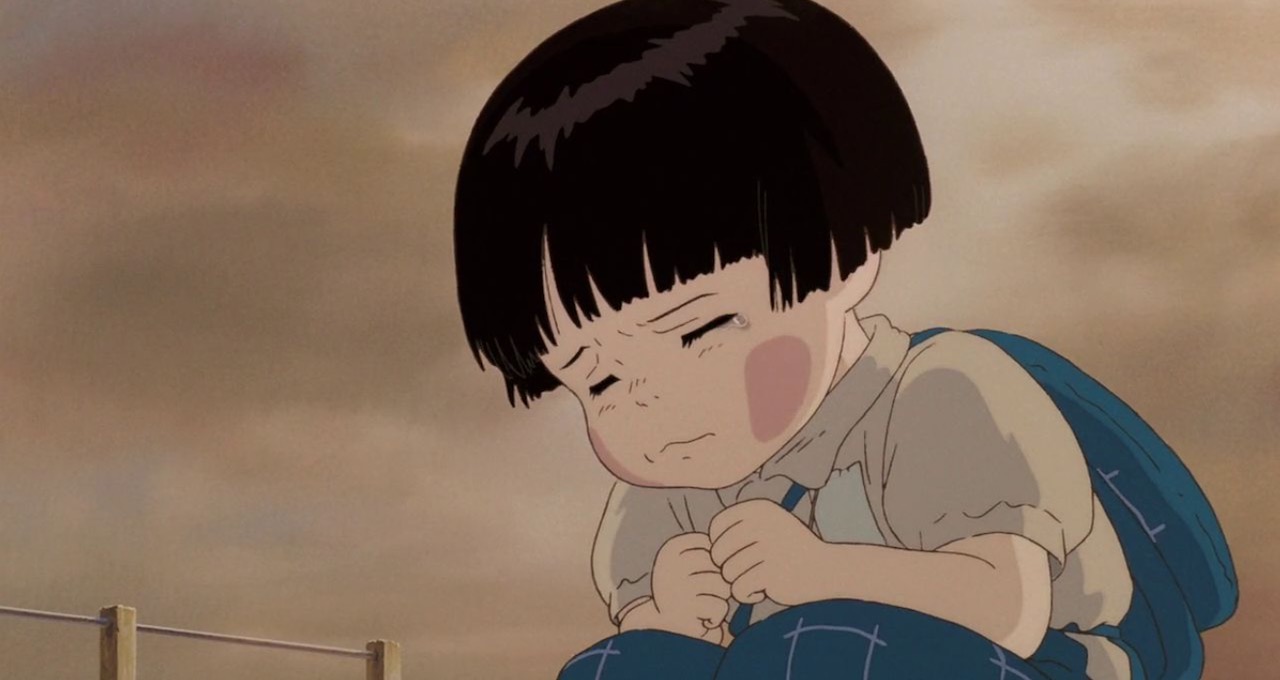
The movie is never in a hurry. It holds the shots so you have time to appreciate them and think about the characters, what they are going through. I keep being mesmerized by that, now that we are in an industry where edits are more and more outrageously fast, leaving really few moments of acting for the characters.
I’m thinking of the scene where Seita [the 14-year-old brother] is lacing his shoes: I’m pretty sure we would have found this shot too complex and expensive to do in cgi, and we would have to cut it. Another beautiful shot is the one with Setsuko trying to pull out the purse strung around her neck: it’s very difficult for her and takes a lot of time, but it adds so much to the character.
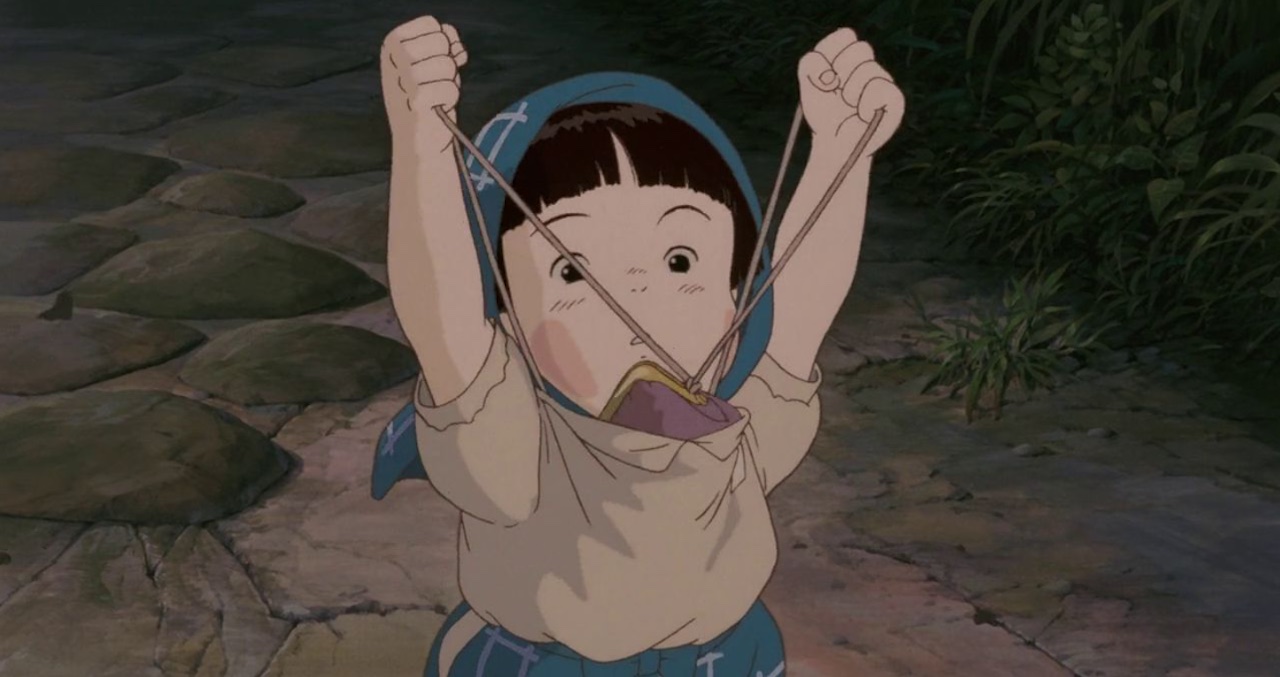
Some scenes get stronger with time, especially as I get more acquainted with Japanese culture through travel, literature, and cinema. I feel I can better appreciate and better understand the subtext and the more quotidian aspects of the film. The scene with the aunt selling the kimono goes from bad to horrible when you learn what symbolism and value the kimono represents in a Japanese family. It becomes about way more than selling some family clothes to get some rice — it’s now a heart-breaking moment, showing how much the aunt only thought of herself.
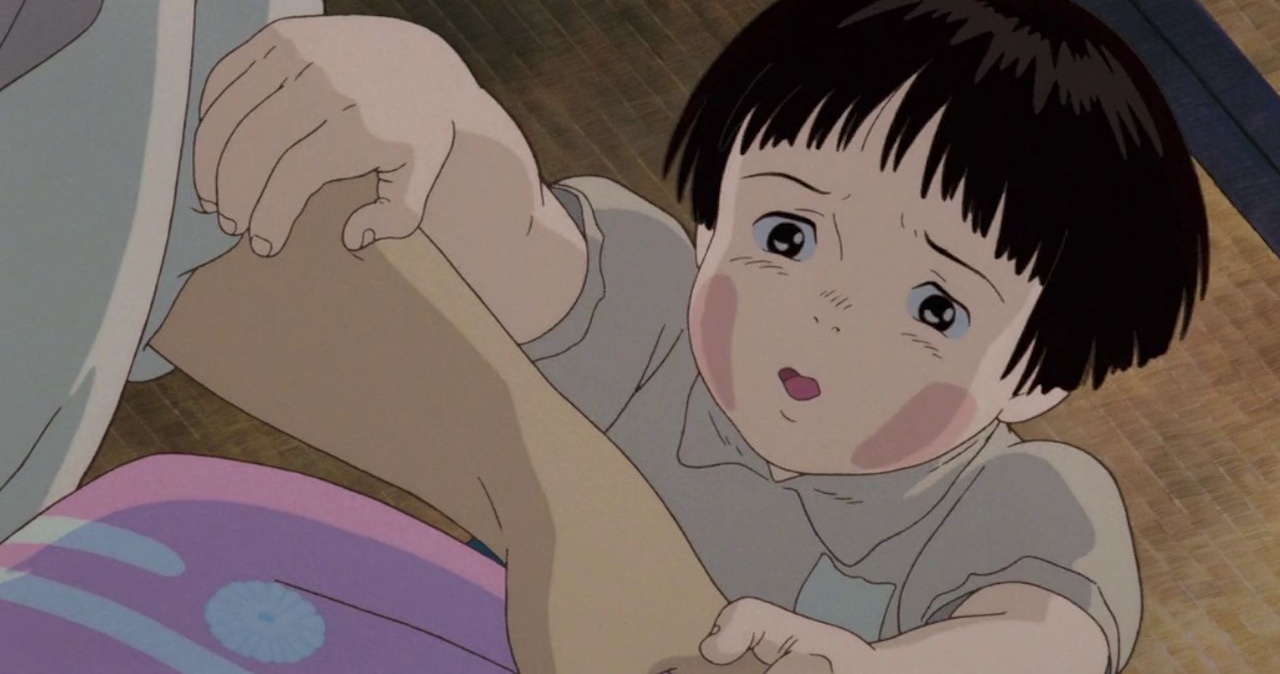
[The relationship between parents and children is central to Grave of the Fireflies, but] I don’t think that watching the film with my mom affected the way I saw it. With distance, I think our experiences were different. I was 18, she was 53. I have a brother who’s 13 years older than me, and I think I easily related to the brother-sister relationship. Loss and death were a bit further away from me than they are now. But my mom was born right after World War II ended — her parents fled from Poland to France, and I think her experience of watching this movie was quite different from mine. Also, she had more knowledge than I had at that time.
The last year of high school, we learned about World War II, but we never dipped into what it might have been for “the others”; we only studied history through the prism of our culture. I had no idea what a bombing alert in Japan might be like. We mostly see pictures of soldiers or fights in history books, but we rarely have pictures of the civilians. This movie was for me a discovery of that: empathy for others, for their experience. War is rarely Manichean, or black and white, and in the middle of the fights there are thousands, millions of innocent people trying to survive. This movie is about survival.
The movie moved me and my mom equally but in different ways. Now that I’m older, I can start to imagine what she might have experienced.
The love I have for cinema I owe to my mom. I often watched movies with her, including animated films. It allowed her to stay in touch with my work and domain. I remember watching Satoshi Kon’s Paprika with her, wondering what she would think. Her reaction at the end was priceless: “Whoa c’était barré!” Which must be the equivalent of “Wow! That was insane!” She loved it!
She was from the old school of cinema, yet she was happily discovering new animation without the preconceived notion that “animation is just for kids.” I really like it when people recognize that animation is not only for kids and is open to many subjects.

